Abstract
The application of gibberellic acid (GA3) to the non-rosette long-day plant Lemna gibba G3 at concentrations from 0.1 to 100 mg/l did not induce flowering on short days and inhibited flowering on long days at concentrations of 1 mg/l and higher. On both short and long days GA3 concentrations above 1 mg/l caused a decrease in frond size and fresh and dry weight, but an increase in the rate of frond production and thus an increase in the # VF (number of vegetative fronds). Identical results were obtained when gibberellin A7 was used instead of GA3.
The addition of the plant growth retardant CCC [(2-chloroethyl) trimethylammonium chloride] to the culture medium on long days resulted in almost complete inhibition of flowering at 10−3 M. Vegetative growth was also inhibited to some extent. With CCC at 10−3 M the simultaneous addition of GA3 resulted in partial reversal of flower inhibition with 0.3 mg/l GA3 being optimal. The inhibition of vegetative growth as measured by fresh and dry weight was also partially reversed by GA3, but the threshold concentration for reversal of flower inhibition was at least 10 times lower than that for inhibition of vegetative growth.
These results are interpreted as indicating that gibberellins are important for flowering in the non-rosette long-day plant L. gibba G3, but apparently are present in non-limiting concentrations on short days.
Full text
PDF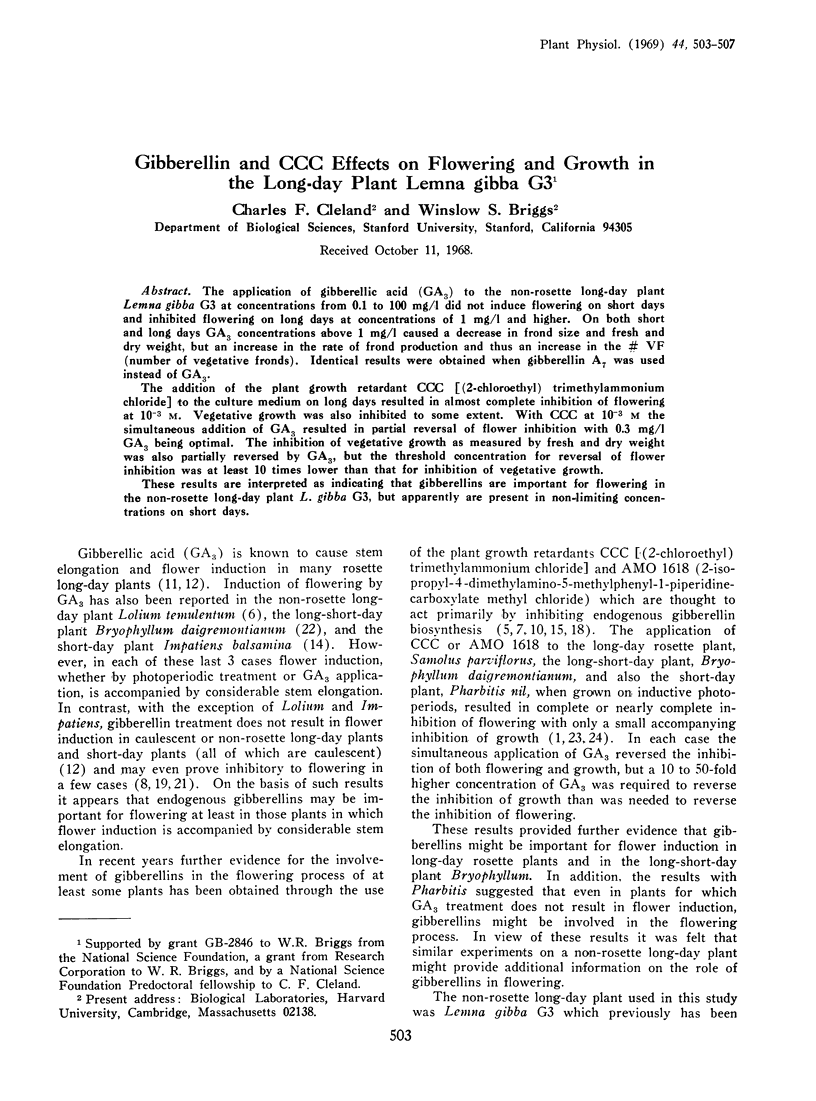
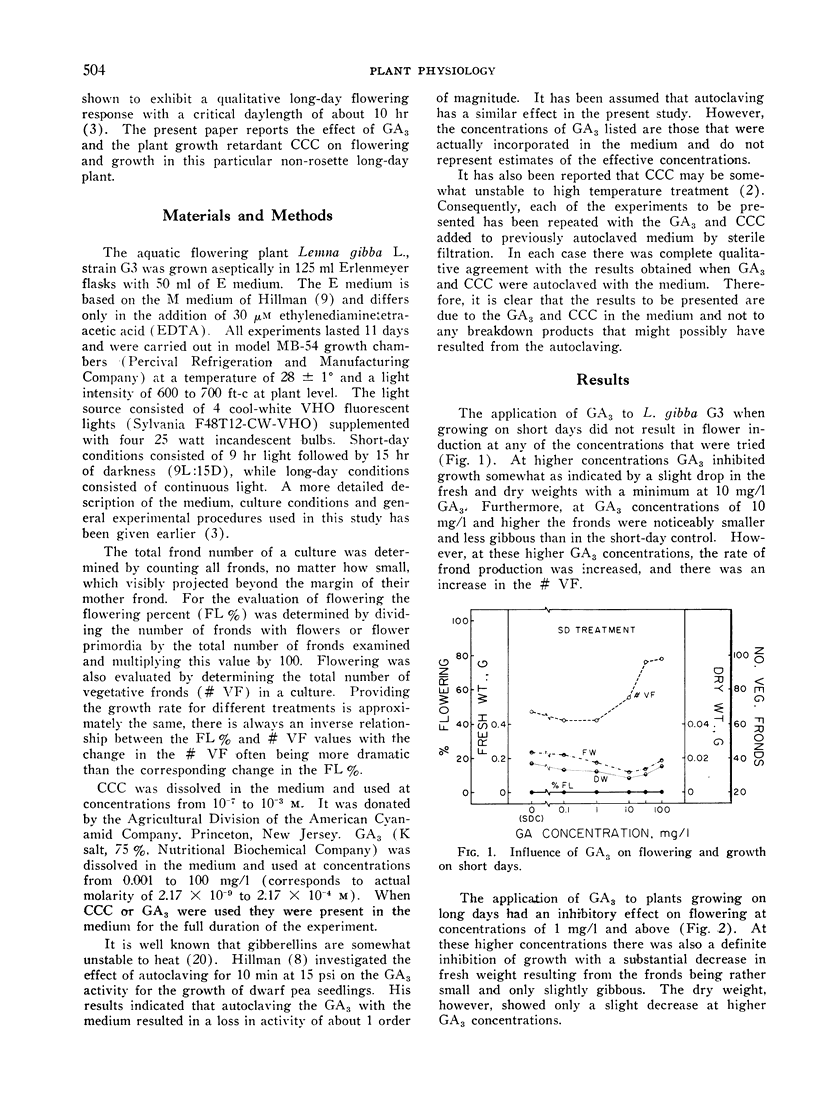
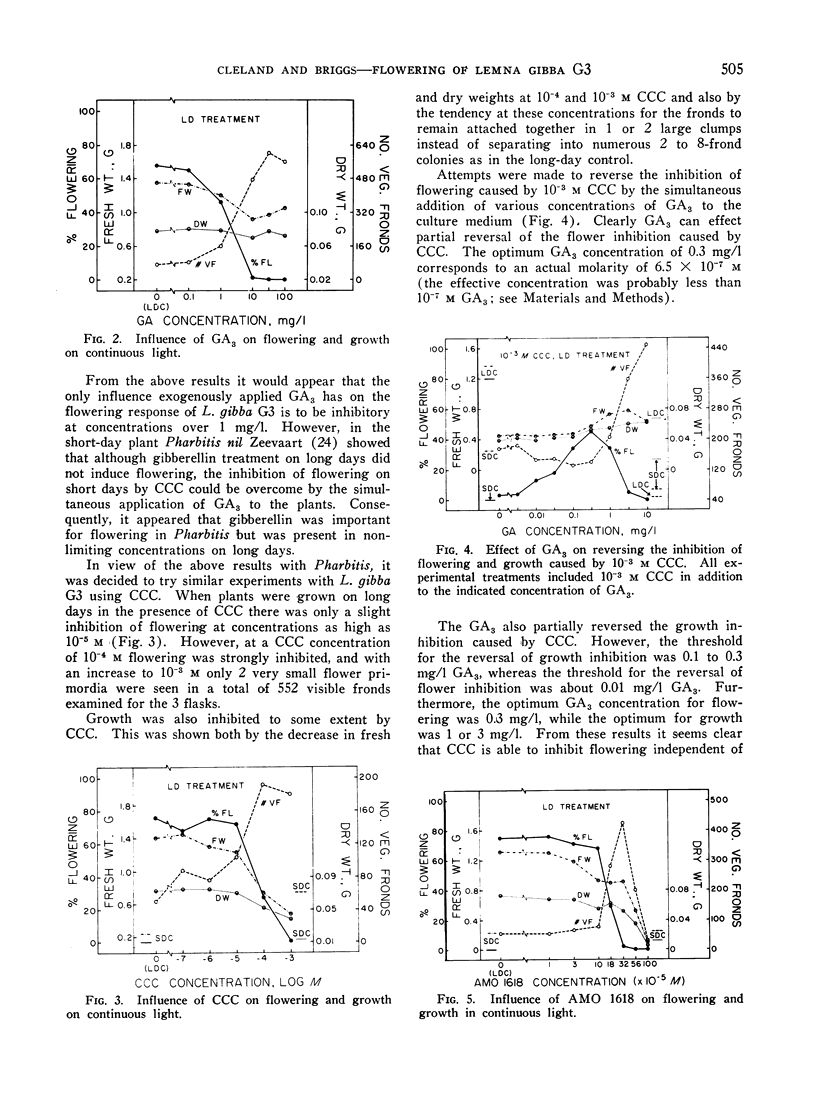
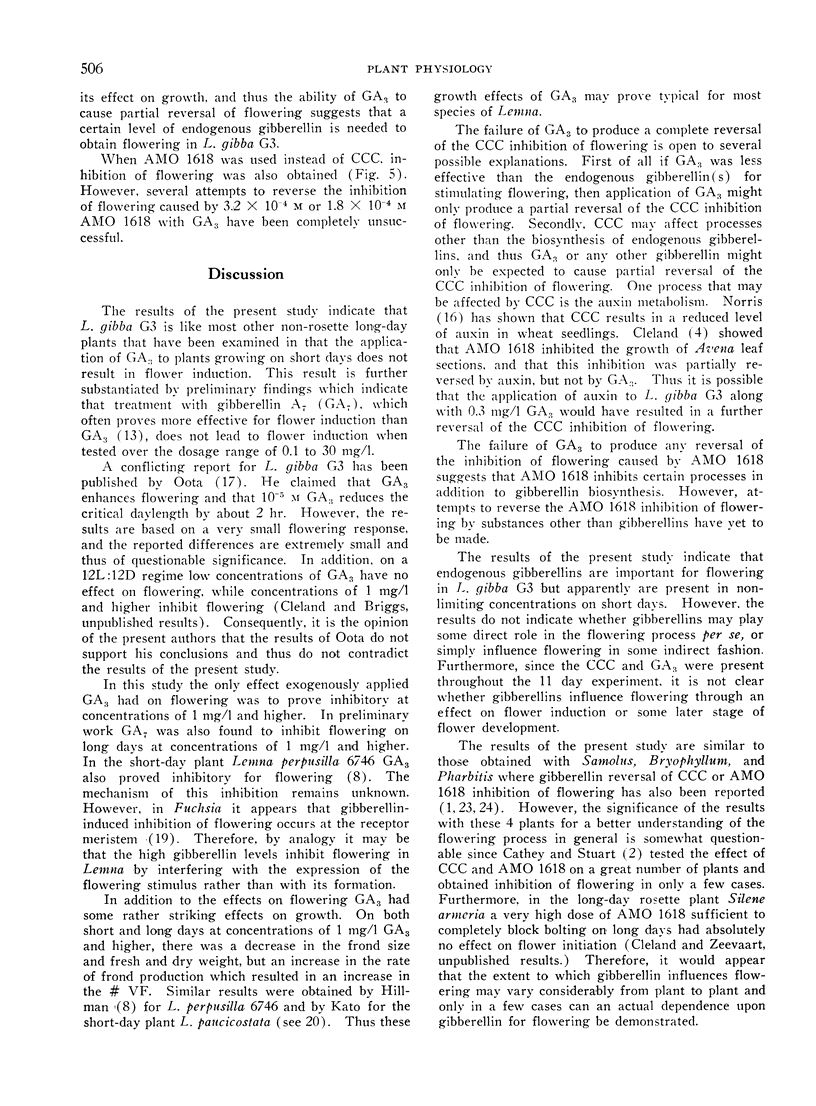
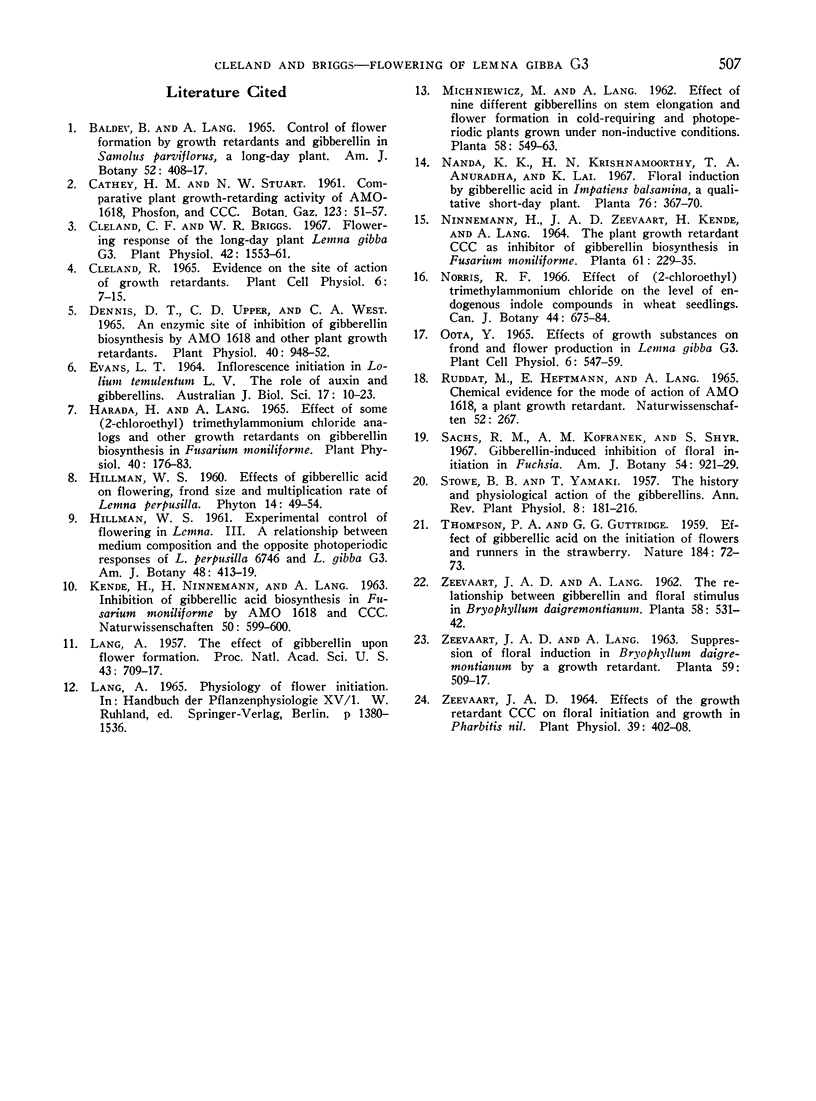
Selected References
These references are in PubMed. This may not be the complete list of references from this article.
- Cleland C. F., Briggs W. R. Flowering Responses of the Long-day Plant Lemna gibba G3. Plant Physiol. 1967 Nov;42(11):1553–1561. doi: 10.1104/pp.42.11.1553. [DOI] [PMC free article] [PubMed] [Google Scholar]
- Dennis D. T., Upper C. D., West C. A. An enzymic site of inhibition of gibberellin biosynthesis by Amo 1618 and other plant growth retardants. Plant Physiol. 1965 Sep;40(5):948–952. doi: 10.1104/pp.40.5.948. [DOI] [PMC free article] [PubMed] [Google Scholar]
- Harada H., Lang A. Effect of some (2-chloroethyl) trimethylammonium chloride analogs and other growth retardants on gibberellin biosynthesis in Fusarium moniliforme. Plant Physiol. 1965 Jan;40(1):176–183. doi: 10.1104/pp.40.1.176. [DOI] [PMC free article] [PubMed] [Google Scholar]
- Lang A. THE EFFECT OF GIBBERELLIN UPON FLOWER FORMATION. Proc Natl Acad Sci U S A. 1957 Aug 15;43(8):709–717. doi: 10.1073/pnas.43.8.709. [DOI] [PMC free article] [PubMed] [Google Scholar]
- Zeevaart J. A. Effects of the Growth Retardant CCC on Floral Initiation and Growth in Pharbitis nil. Plant Physiol. 1964 May;39(3):402–408. doi: 10.1104/pp.39.3.402. [DOI] [PMC free article] [PubMed] [Google Scholar]


